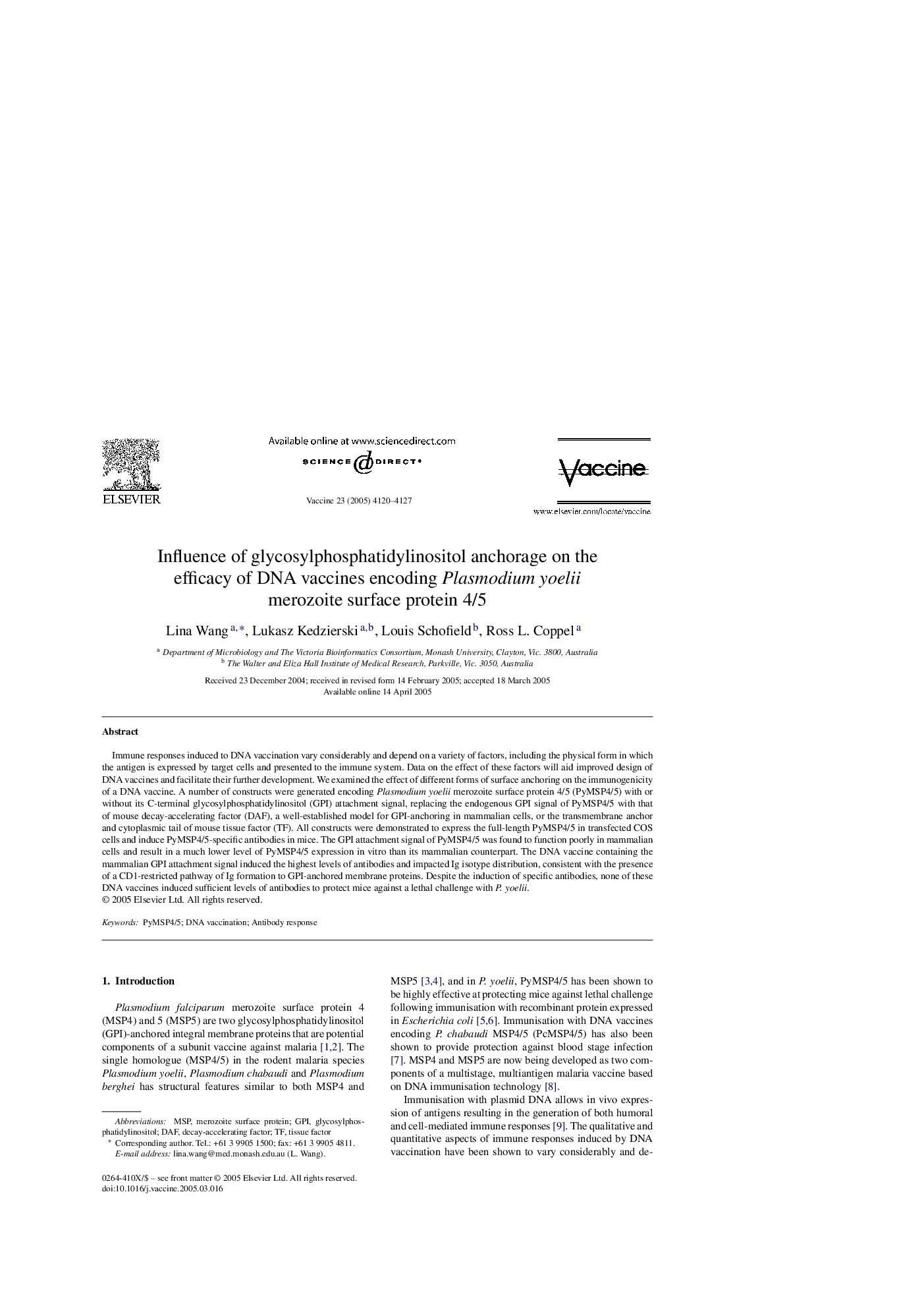| Article ID | Journal | Published Year | Pages | File Type |
|---|---|---|---|---|
| 2410738 | Vaccine | 2005 | 8 Pages |
Immune responses induced to DNA vaccination vary considerably and depend on a variety of factors, including the physical form in which the antigen is expressed by target cells and presented to the immune system. Data on the effect of these factors will aid improved design of DNA vaccines and facilitate their further development. We examined the effect of different forms of surface anchoring on the immunogenicity of a DNA vaccine. A number of constructs were generated encoding Plasmodium yoelii merozoite surface protein 4/5 (PyMSP4/5) with or without its C-terminal glycosylphosphatidylinositol (GPI) attachment signal, replacing the endogenous GPI signal of PyMSP4/5 with that of mouse decay-accelerating factor (DAF), a well-established model for GPI-anchoring in mammalian cells, or the transmembrane anchor and cytoplasmic tail of mouse tissue factor (TF). All constructs were demonstrated to express the full-length PyMSP4/5 in transfected COS cells and induce PyMSP4/5-specific antibodies in mice. The GPI attachment signal of PyMSP4/5 was found to function poorly in mammalian cells and result in a much lower level of PyMSP4/5 expression in vitro than its mammalian counterpart. The DNA vaccine containing the mammalian GPI attachment signal induced the highest levels of antibodies and impacted Ig isotype distribution, consistent with the presence of a CD1-restricted pathway of Ig formation to GPI-anchored membrane proteins. Despite the induction of specific antibodies, none of these DNA vaccines induced sufficient levels of antibodies to protect mice against a lethal challenge with P. yoelii.
